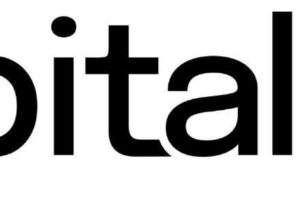Chronic kidney disease (CKD) is one of the most prevalent diseases worldwide. It has been estimated by the American Society of Nephrology (ASN), the European Renal Association – European Dialysis and Transplant Association (ERA-EDTA), and the International Society of Nephrology (ISN) that over 850 million people worldwide have some form of kidney disease [1] – and this enormous number may continue to increase. Diabetes is a key driver of CKD. About 30% off all patients with diabetes suffer from chronic kidney disease. According to the International Diabetes Federation [2], approximately 425 million adults (aged 20-79) were living with diabetes in 2017, and this number will rise to 629 million by 2045. ”As diabetes is one of the main causes of CKD, this means that we will experience a dramatic rise in patients who are in need of renal replacement therapy, too, unless we raise awareness of kidney diseases and improve prevention efforts”, explains Professor Carmine Zoccali, President of the ERA-EDTA.
However, it is not only the number that is dramatic, but also the outcomes. According to the Spanish Society of Nephrology [3], CKD will become the second most important cause of death in some developed countries by the end of the century. “Even if many patients with impaired kidney function do not feel ill over a long period of time, they are at a particularly high risk of many other health problems due to this condition; they live with higher risks of cardiovascular diseases, infections, and hospitalization. CKD is a silent but efficient killer”, explains the ERA-EDTA President. “It is also known that dialysis patients with diabetes have a higher mortality than dialysis patients who do not suffer from diabetes. The combination of these two diseases is associated with very poor outcomes.”
So what can be done? According to Professor Zoccali, it is high time that we focus on the global spread of kidney diseases and invest in prevention strategies. “First of all, we support diabetes associations in their important goal of raising awareness for the risk factors of diabetes and educating people about leading a healthy lifestyle in order to reduce the prevalence of diabetes. But we also have to intensify secondary prevention and try to maintain kidney health in patients with diabetes for as long as possible. We have to find effective therapies to stop the progression of incident CKD in patients with diabetes – and this year, nephrology has taken a huge step towards that goal.”
Major paradigm change: SGLT2 inhibitors for treating CKD in patients with diabetes
In most countries, kidney function in patients with diabetes is monitored on a regular basis. If it drops, the patients have usually been treated with a RAS blocker, as this medication group is known to be renoprotective. However, in spring this year the CREDENCE study [4] showed that canagliflozin was associated with a risk reduction (end stage renal disease, doubling of serum creatinine or renal death) of 34%. According to a newly published review article in CKJ, the official open access journal of the ERA-EDTA, CREDENCE is the first RCT of any SGLT2 inhibitors in which the whole study population had diabetic kidney disease and the primary endpoint was renal, thus providing solid evidence for a novel therapeutic indication for canagliflozin. Dr. María José Soler, one of the study’s authors, explains: “In our view, CREDENCE sets the stage for an indication of canagliflozin for the treatment of diabetic kidney disease, as the combination of canagliflozin and RAS blockade achieved a very low residual renal risk. This would result in a major paradigm change from using SGLT2 inhibitors to treat diabetes type 2 to using them to treat CKD in these patients, mainly for their benefit in terms of renal and cardiac protection.”
[1] Press Release June 27, 2018. The hidden epidemic: Worldwide, over 850 million people suffer from kidney diseases. https://web.era-edta.org/uploads/180627-press-era-asn-isn.pdf
[2] https://www.idf.org/aboutdiabetes/what-is-diabetes/facts-figures.html
[3] Ortiz A, Sanchez-Niño MD, Crespo-Barrio M et al. The Spanish Society of Nephrology (SENEFRO) commentary to the Spain GBD 2016 report: keeping chronic kidney disease out of sight of health authorities will only magnify the problem. Nefrologia 2019; 39: 29–34
[4] Fernandez-Fernandez B, Fernandez-Prado R, Górriz JL, et al. Canagliflozin and Renal Events in Diabetes with Established Nephropathy Clinical Evaluation and Study of Diabetic Nephropathy with Atrasentan: what was learned about the treatment of diabetic kidney disease with canagliflozin and atrasentan? Clin Kidney J. 2019 May 31;12(3):313-321.
With more than 7,000 active members, the ERA-EDTA is one of the biggest nephrology associations worldwide leading European nephrology and one of the most important European Medical Associations. It organizes annual congresses and a Scientific Education Interactive Day (SEID), it produces guidelines, it collects data and performs epidemiological studies through its Registry. It supports fellowships and research projects. Its publications are NDT and CKJ (this last journal is Open Access). The ERA-EDTA also has an online Educational platform: the European Nephrology Portal (ENP) which includes NDT-Educational@ENP. The 2020 Congress will be held June 6-9 in Milan (Italy). Visit the booth to receive more information!
Web site: www.era-edta.org


